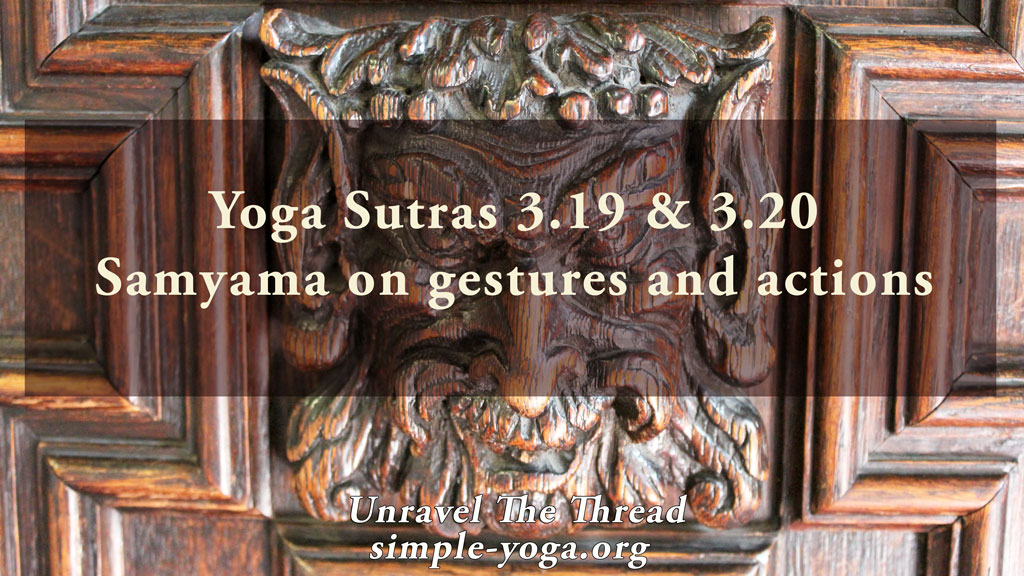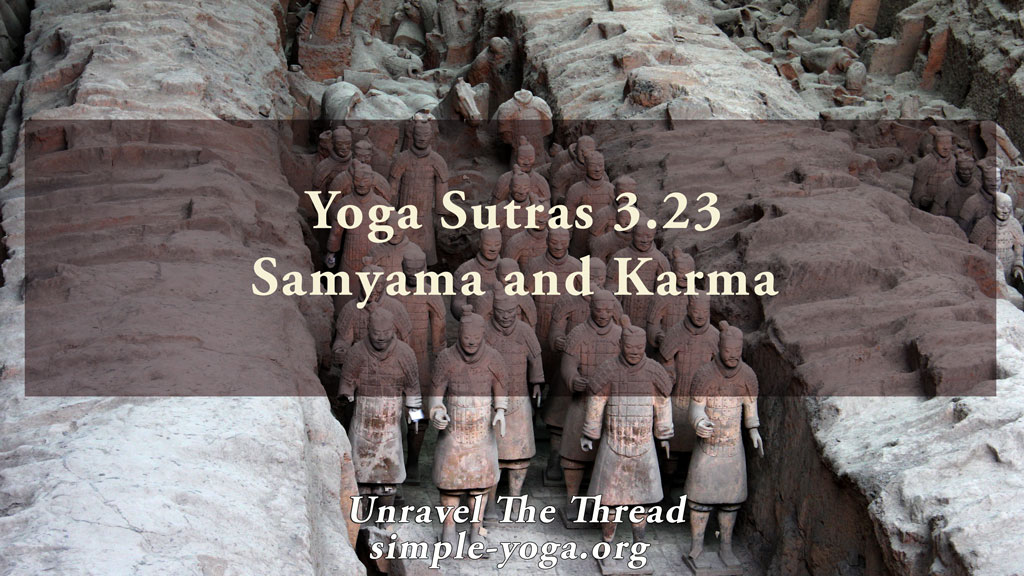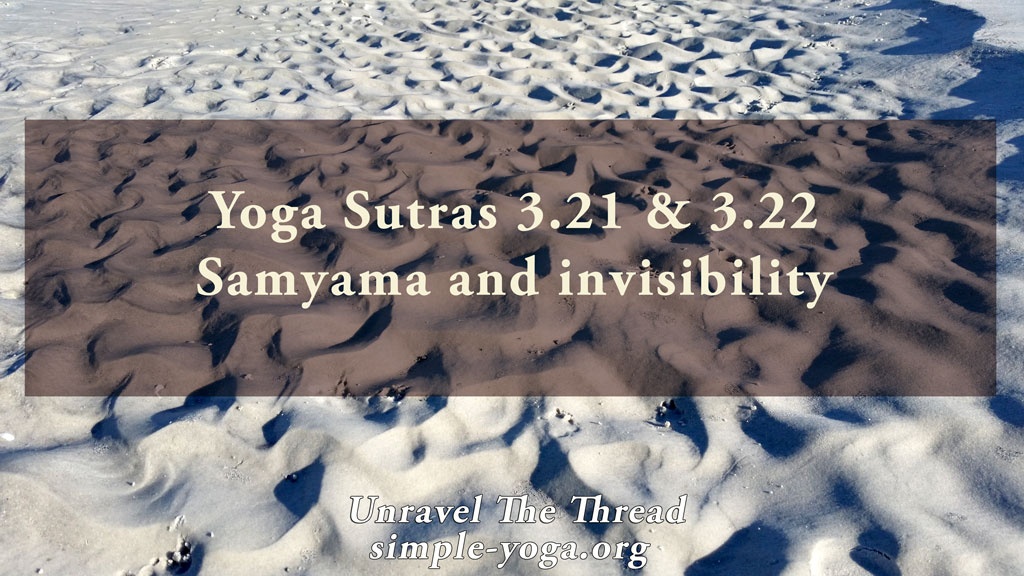
3.19 and 3.20 Samyama on gestures and actions
September 18, 2021
3.23 Samyama and Karma
October 5, 2021
3.19 and 3.20 Samyama on gestures and actions
September 18, 2021
3.23 Samyama and Karma
October 5, 20213.21 and 3.22 Samyama and invisibility

3.21 Meditative integration (samyama) on the relationship between form, light and the eyes enables the yogi to become invisible.
3.22* Similarly with sound and other stimuli.
*Some versions of the Yoga Sutra include aphorism 3.22 while other versions don’t; this explains why some sources say that there are 195 sutras and others say 196.
Yoga is a practical experiment for participating in life fully guided by your conscience, your open mind, and open heart. The experiment consists of removing all obstructions and inefficiencies that prevent you from graciously embodying the flow of awareness through all of life processes. As with any other process, patient persistence gradually reveals subtler aspects of anything you attend to. For instance, as you start practicing the postures and movements in yoga, it may be difficult for you to regulate effectively how far you can move an arm or leg or move into a squat while maintaining a desired level of muscular engagement. Over time it may become second nature to move in and out of each posture with finesse and elegance. Similarly, the thought of lengthening your inhalations and exhalations so that each one lasts for more than 30 seconds may seem impossible. However, as you apply yourself with gentle persistence, you may notice how lengthening your in breaths and out breaths requires a combination of actions in your abdomen and thorax, while making your inhalations and exhalations quite subtle.
Moving into the realm of meditation continues that journey towards exploring the innermost depths of your being. These aphorisms may be seen as a continuation of the practice in sutra 1.35 related to focusing on subtle sense perceptions. Sutra 3.21 suggests a samyama practice focused on the interaction between a form, light, and the eyes. A form or object with light shining upon it will absorb, reflect, or refract that light. This interaction between light and objects is what makes objects visible to you. Your eyes capture the changes to the light according to how each object absorbs, refracts, and reflects light. In the way that advanced yoga practitioners can make their breath so subtle that it may be imperceptible to an outside observer, this sutra indicates that it may be possible to arrange the atomic structure of the body so that it does not absorb, reflect, or refract any light. In other words, the body of the yogi becomes completely neutral and light travels through it without being distorted in any way. Sutra 3.22 suggests the same would be true of other sense stimuli, like sound, touch and taste.
One way of understanding this phenomenon is that yoga is literally a practice of being unconditionally with what is. The yogin does not create interference in the world and is in complete harmony with the perfection of life. One way of trying to put this aphorism into practice is to notice the imprint that you leave – in yourself, others, and in the world – through your actions and interactions.
To what extent do your actions generate more turbulence in the world?
Are your actions motivated by being seen and by recognition?
To what extent are your actions enhancing life in the world?
Is it possible to act without drawing attention to yourself?
Of course, should you find it meaningful and life affirming, you may also explore practicing samyama on the relationship between form, light and sight to make yourself invisible, on the relationship between sound, air and ear to make yourself outwardly and inwardly silent.
As usual, one more way of exploring the meaning of this sutra is by chanting it.
You can choose to chant them.
For sutra 3.21 its traditional form with some of the words coming together:
3.21 kāyarūpasaṃyamāt tatgrāhyaśaktistambhe cakṣuḥ prakāśāsaṃprayoge’ntardhānam
कायरूपसंयमात् तत्ग्राह्यशक्तिस्तम्भे चक्षुः प्रकाशासंप्रयोगेऽन्तर्धानम् ॥२१॥
Another option is to chant each word in the sutra individually:
- kaya
- rūpa
- saṃyamāt
- tat
- grāhya
- śakti
- stambhe
- cakṣuḥ
- prakāśa
- asaṃprayoge
- antardhānam
For sutra 3.22 its traditional form with some of the words coming together:
3.22* etena śabdādyantardhānamuktam
एतेन शब्दाद्यन्तर्धानमुक्तम्॥२२॥
Another option is to chant each word in the sutra individually:
- etena
- śabda
- ādi
- antardhānam
- uktam
If you prefer, you may listen to the podcast:
This is an excerpt from the book Unravel the thread: Applying the ancient wisdom of yoga to live a happy life
If you find Simple-Yoga.org and Unravel the thread useful, consider supporting my labor with a donation, you may also donate using PayPal or Venmo. Thank you!
